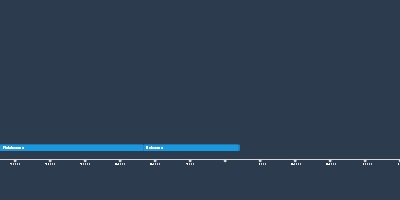Pleistocene (1 jan 2580000 ano antes da era comum – 31 dez 11701 ano antes da era comum)
Descrição:
The Pleistocene is a geological epoch that spanned from about 2.58 million to 11,700 years ago. It is commonly known as the Ice Age, characterized by alternating periods of glaciation (ice ages) and interglacial periods (warmer intervals).Key features of the Pleistocene include:
Glacial Cycles: The Pleistocene is marked by a series of glaciations, during which large ice sheets covered vast areas of the Earth's surface. These glaciations were driven by variations in Earth's orbit and axial tilt, causing changes in global climate patterns. Glacial periods were characterized by colder temperatures, lower sea levels, and the formation of extensive ice sheets and glaciers.
Megafauna: The Pleistocene was home to a diverse array of large mammals known as megafauna. Species such as mammoths, saber-toothed cats, giant ground sloths, and woolly rhinoceroses roamed the Earth during this time. Many of these megafaunal species went extinct towards the end of the Pleistocene, likely due to a combination of climate change and human hunting.
Human Evolution: The Pleistocene was a crucial period for human evolution. Early hominin species, such as Homo habilis, Homo erectus, and Neanderthals, evolved and adapted to changing environments. The emergence of Homo sapiens, our own species, is believed to have occurred during the Pleistocene.
Environmental Changes: The glacial-interglacial cycles of the Pleistocene resulted in significant changes in the Earth's landscapes and ecosystems. As ice sheets advanced and retreated, they reshaped the topography, carved out valleys, and created new lakes and rivers. These changes influenced the distribution of plant and animal species and drove adaptations and migrations.
Sea-Level Fluctuations: The advance and retreat of large ice sheets during the Pleistocene had a profound impact on sea levels. During glacial periods, water was locked up in ice, causing sea levels to drop and exposing land bridges that connected previously isolated land masses. These land bridges, such as the Bering Land Bridge between Asia and North America, facilitated the migration of species, including early humans.
The Pleistocene is a significant period in Earth's history as it set the stage for the subsequent Holocene epoch, which is the current geological epoch. The Pleistocene's climatic fluctuations and the survival strategies developed by early humans and other organisms during this time have shaped the biodiversity and ecosystems we see today.
Adicionado na linha do tempo:
Data:
1 jan 2580000 ano antes da era comum
31 dez 11701 ano antes da era comum
~ 2570004 years
